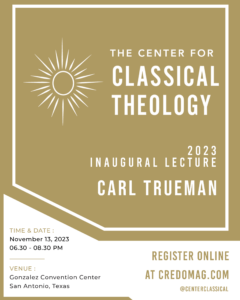
Divine Beauty and Corporate Worship, Part II
S o, what are the aesthetic concerns to which we should devote ourselves in corporate worship service? Consider the following:
o, what are the aesthetic concerns to which we should devote ourselves in corporate worship service? Consider the following:
Beauty in the Content
This follows from what I said previously about fittingness of speech, and it extends to every area of the liturgy. When we are talking about certain elements of the liturgy, like the call to worship or Scripture readings in response to certain elements in the service, there’s a little less pressure to think about the aesthetics because you’re simply reading God’s holy, inspired Word. All Scripture is breathed out by God, after all. At the same time, even here, aesthetic concerns are not irrelevant. We need to pick the passages we’ll be reading, after all, and even though all passages are divine and authoritative, some passages may be more fitting than others on certain occasions. Consider: “Jesus wept” (John 11:35). It’s true, it’s divine revelation, it’s authoritative, it’s glorious, but it might not be the best passage for a call to worship.
But beyond that, this principle extends to everything else as well: the prayers we pray, the songs we sing, and the sermons we preach. A good pastor spends considerable time laboring in the study for weekly sermons, and a significant portion of that time is not simply spent trying to figure out what the passage means or how it applies. A significant portion of that time is spent trying to figure out how to say it right; how to say what the passage means and how it applies in a way that is clear and striking. Fitting. By the way, this is not a separate concern from the central one of laboring to exposit the truth of any given text. Absolute truth is a transcendental—which means that at the level of Being, the True is the Good, and the Good is the Beautiful. Click To TweetAbsolute truth is a transcendental—which means that at the level of Being, the True is the Good, and the Good is the Beautiful (this is even conveyed in the Greek language. The word that often translates to “good” is kalos, which also translates to “beautiful”). We have not conveyed the truth of a passage if we have not, from that passage, come to adore the glory of God—whose glory shines preeminently in the face of Jesus Christ (2 Cor 3:12-4:6). When a preacher presents God’s word to his people, he is giving voice to the Good (or Beautiful—kalos) Shepherd, who addresses his flock through the sermon preached, and woos his sheep with his lovely voice. The preacher is tasked to show his congregation the glory of God in the face of Jesus Christ as this glory emanates from the pages of the Bible. Since in God, the true and the good and the beautiful are inseparable, we should banish the idea that it is possible to convey divine truth without conveying divine beauty. To present divine truth in such a way that its beauty is obscured simply is to obscure divine truth. The presentation of God’s beauty in Christ really is that important in a sermon.
All of this is why I also advocate for carefully thought-out prayers. Now, this can be taken to an extreme, and sometimes poetic language is used to inappropriately call attention to the writer of the prayer. Sometimes it can transform a simple element of the liturgy from a prayer into a mini-sermon, which is not fitting. But even with that danger recognized, the task of carefully articulating a petition so that it is clear enough for a congregation to “amen,” and is yet fitting and striking enough to pull the affections of the congregation towards Christ, necessarily includes an aesthetic dimension.
The same is true for the songs we sing. We should rigorously interrogate the lyrics. It’s not enough for the songs to be true, or to be clear in their praise of God for certain attributes. We should also be asking, “Does it thank him with language that is fitting? Is it beautifully expressed? Is the theme of this song better articulated in another?” So, the content of our worship services should reflect a concern for aesthetic fittingness—we worship the God of all beauty, and there is something not right—almost blasphemous—about admiring his beauty with non-beautiful language.
Beauty in the Structure
Here’s the point: we shouldn’t wing it when it comes to our liturgy. There should be a symmetry to the structure of our services. If we have a call to worship, it should be at the beginning. If we have a benediction, it should be at the end. We shouldn’t be random in our placement of various components of the service. Where do we place the prayer of confession? Should that be before or after the song of praise? Why? When does the sermon come in? Where does communion come? Where do we recite the Nicene Creed? Now, many churches may structure their services differently, but the point is that the liturgy is shaping us, so we should not be thoughtless in how we put it together. We should be thoughtful and concerned with how fitting it is.
Beauty in the Tone
The most important thing I can emphasize here is reverence. We should fear God. If there is one thing we desperately need in the evangelical church, it is a reverent fear of God. We take ourselves far too seriously—our reputation, our plans, our political parties, our pet causes, our social media interactions, our platform, our reputation—and we take God way too lightly. But the exact opposite should be the case. We need to fear God, which means our corporate worship should not be casual or flippant. We need to fear God, which means our corporate worship should not be casual or flippant. Click To TweetGod has told us plainly that our worship of him should be conducted with “fear and trembling, for our God is a consuming fire” (Hebrews 12:29).
Imagine someone walking into a symphony with headphones in, a bag of potato chips, and a large soda that he slurps all throughout. None of those things are wrong in and of themselves, but they are totally inappropriate in such a context. In that context, these things don’t reflect an appropriate appreciation for the music or the event such a person is attending. So, when it comes to the things we do and say and sing in a corporate worship service, a reverent, loving, affectionate, worshipful fear of God should dictate all other aesthetic concerns in terms of tone.
“Fittingness” should show up everywhere else as well. Songs of lament should not be put to boom-chucks. Songs of praise should not be sung like a dirge. If we are lamenting or grieving through song, the song should sound sad—it should fit. If we are expressing grave gratitude for the forgiveness of sins, our songs should reflect that gravity. If we are expressing the triumphant joy and inexpressible happiness that is found in God, our song should be joyful and exuberant and expressive! The tone of our worship, in other words, should not be schizophrenic, but rather coherent.
Beauty in the Style
This topic is treacherous, and many are weary of addressing it explicitly. And yet, it cannot be avoided: divine beauty should even be expressed in the style of corporate songs we sing. Now, we need to recognize that there’s a hierarchy of priorities and values in aesthetic considerations here. So, for example, there may be a song that is incredibly beautiful to listen to, but incredibly difficult to sing to. Or a guitar solo may be beautiful in and of itself, but it is distracting in a corporate worship context. So, what is fitting and lovely in one context may not be fitting and lovely in another. In terms of arranging the hierarchy of aesthetic priorities in music, I would argue the very top priority for corporate worship is the single corporate voice of the congregation. The body singing as one should be the primary (perhaps, sometimes, even the “only”?) musical instrument featured. So, to use the example of the song that is difficult to sing: such a song may reflect well “the value of a beautiful melody” (which is important—the whole congregation yelling a random cacophony of sounds is not beautiful or fitting, after all), but insisting on singing it inappropriately places the value of “a beautiful melody” over the value of “the beauty of the congregation’s shared voice.” In whatever context you are in, in whatever demographic, with whatever kinds of expressiveness represented, there is always a reverent way of expressing praise that corresponds to God’s worth. Click To TweetSo, in a corporate worship gathering, “singability” is, I would emphasize, the top aesthetic concern governing all others in terms of style.
Beyond this consideration, context is going to determine the stylistic aesthetic concerns. In terms of fittingness, I would say that it’s good to translate the above concerns stylistically based on the demographic in your church, but even then, there should be an other-worldly kind of reverence that pulls at the style. This means that if you’re worshipping with a church in Ethiopia, the expressive and stylistic decisions you make are going to be very different than what I might do at an international church in Abu Dhabi, or what someone else might do at a church in Kansas City. But this doesn’t mean that stylistic decisions are solely determined by preference. Wherever the church is, in whatever context, we shouldn’t simply ask the question, “What kind of style do I like,” and then put worship songs to that style. In whatever context you are in, in whatever demographic, with whatever kinds of expressiveness represented, there is always a reverent way of expressing praise that corresponds to God’s worth.
Conclusion
There is so much more we can say about the beauty of God and the way it shapes our corporate worship. But I trust that the central point is clear enough. Delighting in the beauty of God is the telos of every human being. We are all made to adore the Trinity, and anything we do that falls short of laboring to gaze upon the beauty of the Lord (Psalm 27:4) falls short of what God has made us to be and do. If this is true for the individual, how much more so for the local church! Therefore, let us fix our eyes steadfastly on the beauty of the Trinity in the face of Jesus Christ, and let our adoration of his beauty shape everything we say and do.

